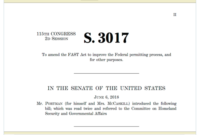A New York City courthouse has required tens of millions of dollars in repairs even after the project was completed over budget and more than two years late.
The city Dept. of Design and Construction has spent $41.6 million on repairs to the Bronx Hall of Justice, funded from a settlement following multiple lawsuits related to the project. Department authorities believe the issues originate mostly from construction, agency representative Ian Michaels said.
It's the latest in a series of financial and other woes that have plagued the project. When finished, it was $96.4 million over its $325-million budget. Since it opened in February 2008, the 774,000-sq-ft steel-framed building has had problems with roof leaks, storm lines, glass breaking, hot water heating, HVAC, sewer, plumbing and other issues, according to city records.
The DDC's first capital project included work on plaza waterproofing, garage ductwork, the storm line on the building's north side, house sewer, plumbing vent lines and other areas, according to Michaels. That work was completed in September 2021.
A second capital project is underway and expected to finish in May 2022. That project is dealing with HVAC airflow, enginator exhaust, the curtainwall shadowbox's heat transfer, water penetration through underground conduits, interior glass breakage, excess heat in courtrooms' audiovisual closets and other issues. More work may still be needed to completely repair the structure, but that covers most of what DCC was able to do with the settlement money, Michaels adds.
As that capital project continues, the building’s problems have gained more attention since nonprofit news outlet The City published a Feb. 20 report detailing complaints about the building and some of the impacts its troubles have had on court operations.
The project posed problems from nearly the beginning. Security concerns prompted several changes to plans for the Rafael Viñoly Architects-designed courthouse. Ground broke in August 2001, just weeks before the 9/11 attacks, with plans that it would be complete by December 2005. Site acquisition difficulties delayed some of the work, as did an unexpected soil contamination.
The Dormitory Authority of the State of New York, which was in charge of the project, had 19 different prime contractors plus several engineering and consulting firms involved. As ENR previously reported (ENR 2/18/08 p.14), one contractor was removed because it was under investigation by the city and another contractor went out of business during the project.
A sprawling federal court case began before the building even opened. As the fifth-party plaintiff in the case, DASNY sued 17 companies involved in the project, accusing them of failing to provide services, performing shoddy work or not coordinating with other contractors, leading to work delays. Contractors also filed their own claims in the case. Court records show a judge ordered at least one company, Materials Testing Lab, to pay DASNY $100,000—but that DASNY also agreed to pay $5.1 million to an electrical contractor to settle claims.
Previous Controversy That Included Courthouse
The Bronx courthouse project had been in the news over another matter.
In 2012, the U.S. Attorney for the Eastern District of New York filed fraud charges against Lend Lease (US) Construction LMB Inc. and James Abadie, who had been principal of the company’s New York office when it was still known as Bovis Lend Lease. The company worked on the courthouse project as construction manager.
Authorities said the firm intentionally over-billed clients on that and other projects for one to two hours per day and used the funds to make occasional lump-sum payments to valuable mason tender union foremen that the construction manager wished to reward and retain to keep projects running smoothly. The practice included the Bronx courthouse and Abadie, according to a prosecutors' letter prior to sentencing, tried to limit the practice that he had inherited as he rose up in the ranks of the company.
The practice continued "but not to line Mr. Abadie's pockets," prosecutors noted. Abadie had resigned from the company in 2009 and cooperated with the investigation.
The company admitted and accepted responsibility for the alleged crimes as part of a deferred prosecution deal and agreed to pay $56.6 million in penalties and restitution in 2012, according to the Justice Dept., while Abadie pleaded guilty to conspiring to commit mail and wire fraud while receiving two years of probation.
Call for Courthouse Investigation
Meanwhile, problems with the courthouse project continued. Then-City Councilmember Ritchie Torres (D), who is now a U.S. representative, called on the city’s Dept. of Investigation to probe alleged mismanagement of the project and related work on a public plaza outside the courthouse, which didn’t end up reopening until 2020.
“Even though the architecture glitters on the surface, the underlying infrastructure has been plagued with a whole host of problems that have come back to haunt the taxpayers of the Bronx,” Torres said during a 2019 press conference.
A DOI spokesperson declined to comment on whether the agency had initiated an investigation into the projects.
The courthouse has not yet obtained a final certificate of occupancy, 14 years after it opened, DOB records show. Instead, it has been applying for, and receiving, temporary certificates of occupancy, which must be renewed by the owners every 90 days. It's fairly common for large buildings in New York to be occupied under renewed TCOs for years, a DOB spokesperson says—even the Empire State Building is occupied under a TCO.
However, the Bronx Hall of Justice’s last TCO expired on Dec. 13, 2020, and has not been renewed. An occupied building with an expired TCO is an administrative issue, and not necessarily a safety issue, according to the DOB.
The courthouse has also faced a squeeze from more use than was intended when it was designed. In 2004, the Bronx County Criminal Court and the Criminal Term of Bronx County Supreme Court were merged into a single Bronx Criminal Division.
A state court system report notes that the Hall of Justice's layout, designed before the merger, “is not well-suited to the timely admission of a much larger than anticipated volume of court users.” Also, according to that report, delays often happen because there are not enough elevators to move as many as 300 prisoners a day to and from the basement.
Correction: This story was updated initially to clarify that Lend Lease (US) Construction LMB Inc. did not plead guilty to any charges in 2012 but instead entered into a deferred prosecution agreement and later to clarify James Abadie's role and actions in the matter as described by the U.S. attorney.






Post a comment to this article
Report Abusive Comment